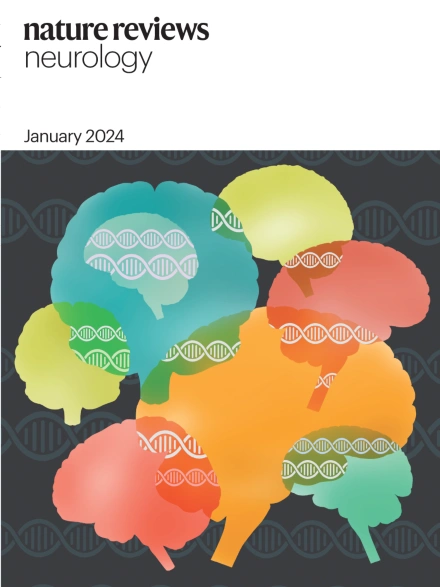Is Alzheimer disease a disease?
IF 28.2
1区 医学
Q1 CLINICAL NEUROLOGY
引用次数: 0
Abstract
Dementia, a prevalent condition among older individuals, has profound societal implications. Extensive research has resulted in no cure for what is perceived as the most common dementing illness: Alzheimer disease (AD). AD is defined by specific brain abnormalities — amyloid-β plaques and tau protein neurofibrillary tangles — that are proposed to actively influence the neurodegenerative process. However, conclusive evidence of amyloid-β toxicity is lacking, the mechanisms leading to the accumulation of plaques and tangles are unknown, and removing amyloid-β has not halted neurodegeneration. So, the question remains, are we making progress towards a solution? The complexity of AD is underscored by numerous genetic and environmental risk factors, and diverse clinical presentations, suggesting that AD is more akin to a syndrome than to a traditional disease, with its pathological manifestation representing a convergence of pathogenic pathways. Therefore, a solution requires a multifaceted approach over a single ‘silver bullet’. Improved recognition and classification of conditions that converge in plaques and tangle accumulation and their treatment requires the use of multiple strategies simultaneously. Alzheimer disease is a complex and multifactorial condition. The authors of this Perspective suggest that its lack of a singular common pathogenesis prevents it from being regarded as a straightforward ‘disease’ and that treatment will therefore require a multifaceted approach.阿尔茨海默病是一种病吗?
痴呆症是老年人中的一种常见病,具有深远的社会影响。经过广泛的研究,人们认为最常见的痴呆症仍无法治愈:阿尔茨海默病(AD)。阿尔茨海默病是由特定的大脑异常--淀粉样β斑块和 tau 蛋白神经纤维缠结--所定义的,这些异常被认为会对神经退行性过程产生积极影响。然而,目前还缺乏淀粉样β毒性的确凿证据,导致斑块和缠结积累的机制也不清楚,而且去除淀粉样β并不能阻止神经退行性变。因此,问题仍然是,我们是否在寻找解决方案方面取得了进展?众多遗传和环境风险因素以及多种多样的临床表现凸显了注意力缺失症的复杂性,这表明注意力缺失症与其说是一种传统疾病,不如说是一种综合征,其病理表现代表了多种致病途径的交汇。因此,解决方案需要多方面的方法,而不是单一的 "银弹"。要更好地识别和分类斑块和纠结聚集的病症并对其进行治疗,需要同时采用多种策略。
本文章由计算机程序翻译,如有差异,请以英文原文为准。
求助全文
约1分钟内获得全文
求助全文
来源期刊

Nature Reviews Neurology
医学-临床神经学
CiteScore
29.90
自引率
0.80%
发文量
138
审稿时长
6-12 weeks
期刊介绍:
Nature Reviews Neurology aims to be the premier source of reviews and commentaries for the scientific and clinical communities we serve. We want to provide an unparalleled service to authors, referees, and readers, and we work hard to maximize the usefulness and impact of each article. The journal publishes Research Highlights, Comments, News & Views, Reviews, Consensus Statements, and Perspectives relevant to researchers and clinicians working in the field of neurology. Our broad scope ensures that the work we publish reaches the widest possible audience. Our articles are authoritative, accessible, and enhanced with clearly understandable figures, tables, and other display items. This page gives more detail about the aims and scope of the journal.
 求助内容:
求助内容: 应助结果提醒方式:
应助结果提醒方式:


